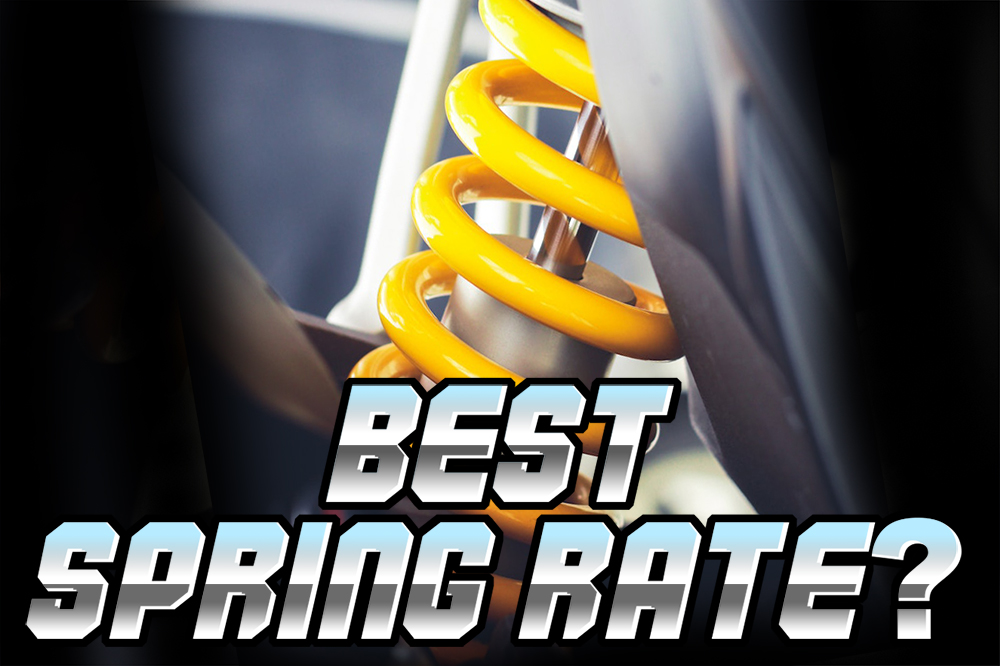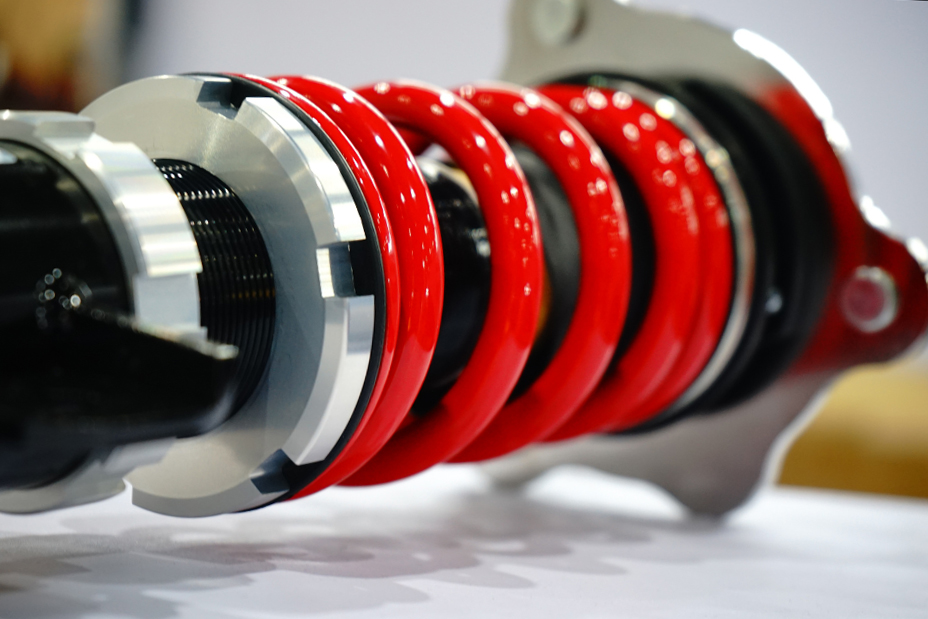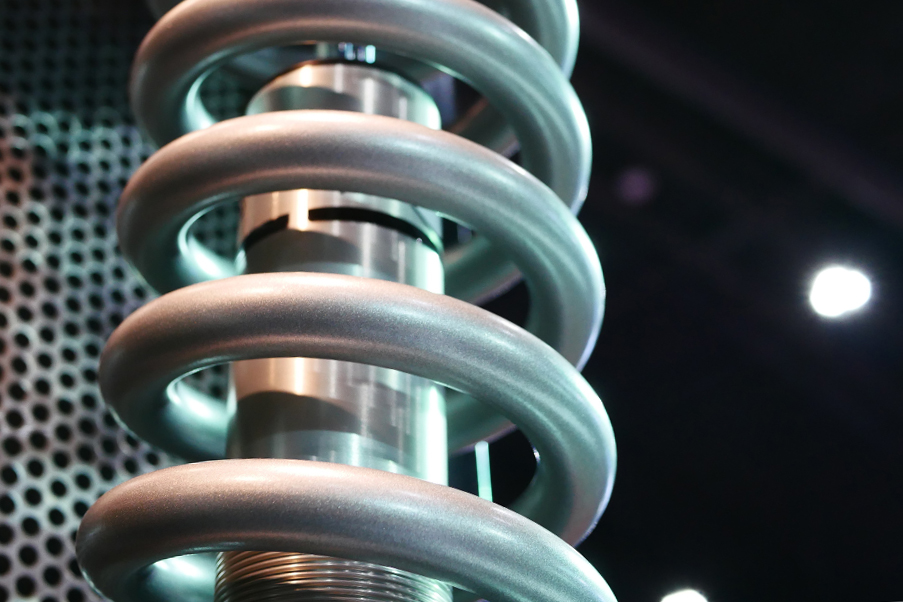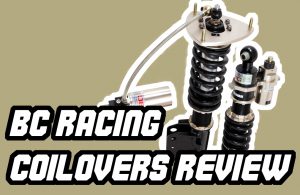Coilover Spring Rates: The Ultimate Guide (With Chart)
When it comes to coilovers, selecting the right spring rate is going to make a crucial difference in both how the car rides and how it handles.
However, unless you are already a suspension expert, it can be hard to know what all the numbers means and which ones are best for your car.
In this post, I’m going to explain what spring rates are, how it all works and how to decide what spring rates you need for your car.
Firstly, What Is Spring Rate?
Spring rate is a measurement of how much force/weight is required to compress a spring a certain distance. It is either displayed as kg/mm, which means it takes a certain number of kilograms of force/weight to compress the spring 1 millimeter, or lb/in, which takes a certain number of pounds to compress the spring an inch.
The number of the spring rate is how much of that force is required. So for example, if a spring is rated 8kg/mm, it takes 8 kilograms of force to compress the spring 1mm.
Same thing with lb/in – if the spring is rated 480lb, it will take 480lb of force to compress the spring 1 inch.
The measurements are often displayed as “K” or “kg” for kg/mm and “LB” for lb/in.
So, How Do You Choose the Best Coilover Spring Rate?
I’m not going to lie, is quite complicated.
There are several factors to consider when selecting the right spring rate. The weight of the car, the suspension design, the desired ride comfort, the desired handling characteristics and what the car will be used for all play a part in which spring rate will be best.
The job of the springs is to support the car and keep the dampers working in their optimal range. A stiffer spring (higher spring rate) generally means less body roll but a harsher ride. A softer spring (lower spring rate) means a more comfortable ride but more body roll.
People tend to think that stiffer springs means better handling due to the reduced body roll. However, that’s not the case. Too stiff springs can actually cause worse handling – one of the reasons why is because the tyres won’t have as much contact with the ground over bumps as they would with softer springs, so you actually end up with less grip.
The answer is to find a balance between adequately supporting the chassis of the car, ride comfort and handling, which can then be optimized through sway bars and damper settings without having negative impacts on grip, as mentioned earlier.
Coilover manufacturers will have a “base” spring rate they have determined for each car, and they normally do this based off of their testing to find the best all round option.
The only real way you are going to be able to select the perfect spring rate is to buy a set of coilovers, put them on the car and see how the car sits, how it performs and measure the suspension geometry.
Once you’ve got those data points, you can then order springs with a more suitable spring rate for your needs.
The problem is most people either won’t have the money or time to spend doing this, or they just don’t want to.
So in that case, the easiest way by far to find out your optimal spring rate is to speak to the coilover manufacturer or retailer, let them know what you intend to do with the car and ask them to recommend the best spring rates.
You also need to factor in that the dampers need to be valved to handle the spring rate, as too high or low spring rate for the damper is going to result in the damper not being able to do its job correctly and will make for worse handling and a worse ride.
Spring Rate Conversion Chart
Going between kg/mm and lb/in can be confusing, and it doesn’t help that there isn’t one standard and manufacturers tend to use either one randomly.
So, to help you figure out the spring rate of your coilovers, here is a chart which coverts kg/mm into lb/in and vice versa:
Kg/mm to Lb/in
| 5 kg/mm | 280 lb/in |
| 6 kg/mm | 336 lb/in |
| 7 kg/mm | 392 lb/in |
| 8 kg/mm | 448 lb/in |
| 9 kg/mm | 504 lb/in |
| 10 kg/mm | 560 lb/in |
| 11 kg/mm | 616 lb/in |
| 12 kg/mm | 672 lb/in |
| 13 kg/mm | 723 lb/in |
| 14 kg/mm | 784 lb/in |
Lb/in to Kg/mm
| 300 lb/in | 5.3 kg/mm |
| 350 lb/in | 6.2 kg/mm |
| 400 lb/in | 7.1 kg/mm |
| 450 lb/in | 8.0 kg/mm |
| 500 lb/in | 8.9 kg/mm |
| 550 lb/in | 9.8 kg/mm |
| 600 lb/in | 10.7 kg/mm |
| 650 lb/in | 11.6 kg/mm |
| 700 lb/in | 12.5 kg/mm |
| 750 lb/in | 13.3 kg/mm |
Progressive Springs
If your coilovers have progressive springs, or you are looking at some, you have to keep in mind that they work slightly differently. The chart above won’t work for progressive springs.
Progressive springs have variable spring rates, meaning for the first section they will have one spring rate, then the next section has a different spring rate and so on, so as the spring compresses, the rate changes.
You’ll see this on some coilovers such as KWs which are designed for more road comfort. That’s really the only benefit to progressive springs. Race cars pretty much all use linear springs.
If you are dealing with progressive springs, it’s best to discuss this with the manufacturer to find out what’s best for your situation.
Front Vs Rear Spring Rates
Most cars have different front and rear spring rates. This is primarily due to the fact that the weight distribution is rarely exactly 50/50, so the springs must account for the different weight on each corner.
If you are looking at getting custom spring rates, you need to take into account the weight distribution of the car.
The difference in spring rates will also affect the car’s handling. Softer springs up front and stiffer in the rear will result in more oversteer, and stiffer springs up front and softer in the rear will result in more understeer. So this needs to also be taken into consideration along with the weight distribution.
Is Higher Or Lower Spring Rate Better?
The answer is that it depends on the application, but generally, lower is better. What I mean by that is ideally, you want the lowest possible spring rate that is going to support the chassis of the car, minimize body roll, optimize weight transfer, maximize grip and keep a comfortable ride. Going with too high of a spring rate will mean less body roll, but it will also mean less grip and a worse ride, so going for the stiffest spring possible isn’t actually going to help you.
What Does a Higher Spring Rate Mean?
A higher spring rate means it takes more weight or force to compress the spring the same distance as it would a lower spring rate. In short, it means the spring is stiffer.
What Is a Good Coilover Spring Rate?
What a good coilover spring rate is really depends on the car and several other factors, but typically you will see coilovers with a range of 6kg/mm to 12kg/mm, or 335lb/in to 670lb/in.
Does Spring Rate Affect Ride Height?
Yes, spring rate does affect ride height. A stiffer spring will cause the car to sit higher, because the stiffer spring needs more weight to compress it down to the same height as the softer spring, but the weight of the car has not changed. Inversely, a softer spring will cause the car to sit lower, as the softer spring requires less weight to compress it the same distance as the stiffer spring, so it will compress more.
How Do Spring Rates Affect Handling?
Spring rates affect handling because they affect how the car behaves in response to both bumps and weight transfer. Stiffer springs result in less movement by the car, which means less body roll, but it can also mean less grip, as the tyres will have less contact with the road due to the minimized movement. The key is to find the balance, and use the lowest spring rate possible.
Is Spring Rate the Same As Stiffness?
Essentially yes, the spring rate does dictate the stiffness of the spring. However, keep in mind that other factors also affect the stiffness of the car, such as spring preload and damper settings.
Does Spring Rate Change With Length?
Yes, spring rate does change with length. The longer the spring, with all else being equal such as wire thickness and number of coils, the lower the spring rate will be. The shorter the spring, all else being equal, the higher the spring rate will be.
What Does 8K Spring Rate Mean?
8k spring rate means the same as 8kg/mm (or 447lb/in) and means it takes 8kg of weight or force to compress the spring by 1mm.
Does Spring Rate Change With Compression?
Yes, the rate of a spring does change with compression. As a spring compresses, some of the closer coils will bind, resulting is less free spring available and causing a higher spring rate until all the coils bind and the spring cannot be compressed any more.
Does Cutting a Spring Change the Spring Rate?
Yes, because you are shortening the spring but all else stays the same, the spring rate increases. However, if you are cutting progressive springs, then things get more complicated, because if you cut the coils with a higher spring rate then the overall spring will be softer.
- BC Racing Coilovers Review – Are They Any Good? - September 12, 2024
- 8+ Best Nissan 350Z Coilover Guide In 2025 - September 12, 2024
- Top 6 Best 2015 Subaru WRX Coilovers - September 12, 2024






